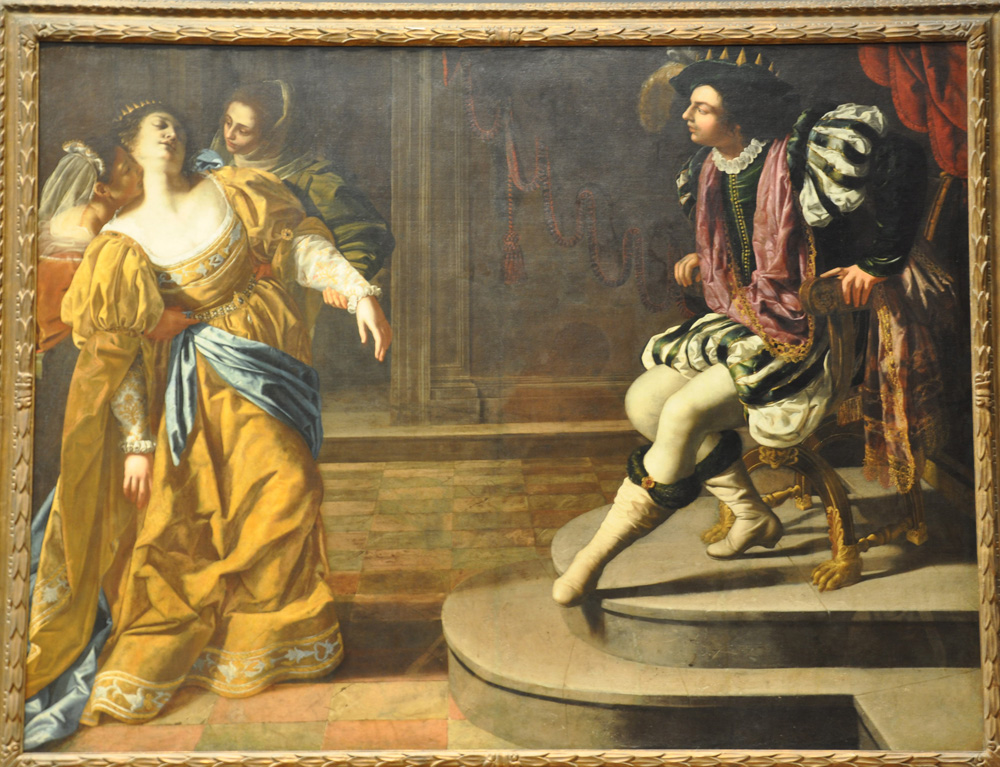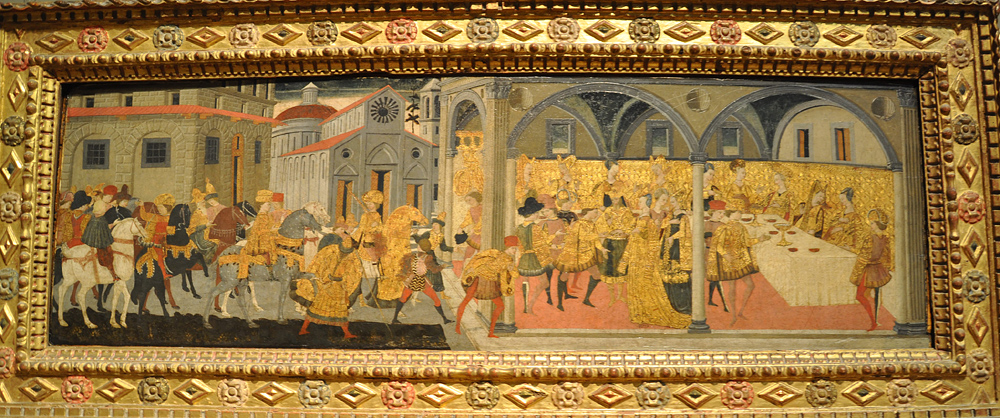Esther
The Iconography
NARRATIVE IMAGES
Parts of the Book of Esther that were included in the Vulgate were rejected by Reformation editors, so some details in narrative images from Catholic sources will reflect the Vulgate version only. For example, in the Vulgate Esther goes to Ahasuerus in her best finery and accompanied by two maids, as at right. To gain the king's sympathy, she faints before him. The corresponding passage in the King James version has the finery but not the maids or the swoon.In medieval exegesis Esther's replacement of Vasthi prefigures God's dismissal of Synagoga and crowning of Ecclesia.1 Accordingly, this woodcut of the crowning of Esther borrows from the iconography of Coronation of the Virgin images. The Christian interpretation may also lie behind Veronese's triumphalist Esther Cycle in Venice's Church of San Sebastian.
Usually paintings of Esther focus on specific incidents in the story. In portraits she has no attribute other than her crown.
Prepared in 2014 by Richard Stracke, Emeritus Professor of English, Augusta University. Revised 2019-02-02.
HOME PAGE
Marco del Buono Giamberti and Apollonio di Giovanni di Tomaso, The Story of Esther, circa 1460-70. The painting shows the wedding of Esther and Ahasuerus (See the description page.)

Artemisia Gentilischi, Esther before Ahasuerus (See the description page)
MORE IMAGES
- Circa 1270: An illuminated capital celebrates Esther and Mordecai's triumph over Haman.
NAMES
- Esther is also called Hadassah
NOTES
1 Glossa Ordinaria, II, 1615-28.
